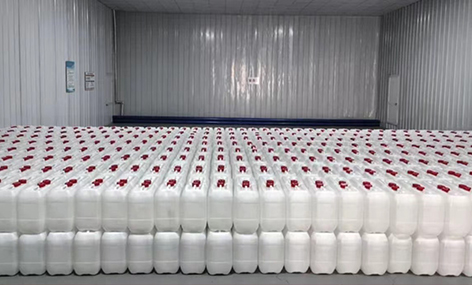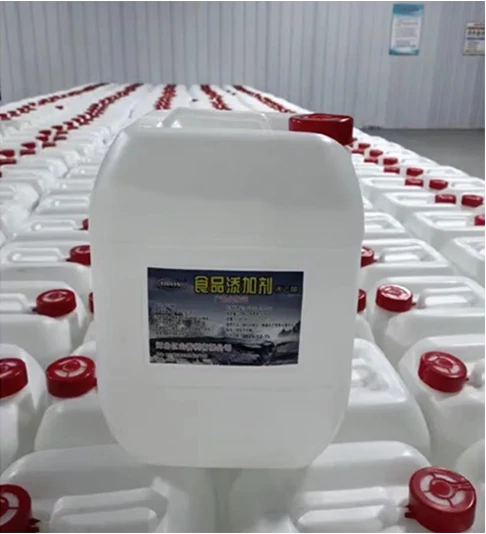
1 月 . 26, 2025 00:48 Back to list
Food grade glacial acetic acid
Glacial acetic acid and normal acetic acid, though chemically similar, present significant differences that impact their use, handling, and applications. Understanding these differences is critical for industries ranging from chemical manufacturing to food processing. Here's a detailed exploration of these differences, grounded in expert knowledge and trustworthy sources.
Handling and Safety From an expert standpoint, handling glacial acetic acid requires stringent safety protocols. It is a hazardous material that can cause severe burns upon contact with skin or eyes and poses respiratory risks if inhaled. Personal protective equipment (PPE), such as gloves, goggles, and masks, is essential when working with this material. Furthermore, appropriate ventilation is necessary to prevent the accumulation of vapors, which could potentially lead to fire hazards. In stark contrast, normal acetic acid poses minimal risk under typical usage conditions and can be safely handled without specialized gear in domestic settings. Applications in Industry Glacial acetic acid’s high reactivity and purity make it indispensable in the chemical industry. It acts as a solvent and reagent for synthesizing a wide range of compounds, including acetic anhydride and ester derivatives vital in the production of polymers and pharmaceuticals. Conversely, normal acetic acid's applications are extensive in the food industry, where it is used to lend tangy flavor profiles to sauces and dressings, or function as a preservative to inhibit bacterial growth. Moreover, its antimicrobial properties make it suitable for cleaning and sanitization purposes. Regulatory and Environmental Considerations From a regulatory perspective, the use of glacial acetic acid is heavily monitored due to its hazardous nature. Compliance with safety standards set by organizations such as OSHA and the EPA is mandatory in industrial settings to mitigate risks. Environmental considerations include the careful management of waste and emissions to prevent harmful effects on ecosystems. In comparison, normal acetic acid's environmental impact is relatively negligible. When used in domestic quantities, it poses no significant environmental threat and is readily biodegradable. Conclusion The difference between glacial acetic acid and normal acetic acid underscores the importance of concentration in determining the properties and safe usage of chemical substances. Professionals dealing with these substances must possess a thorough understanding of these differences to ensure appropriate applications and compliance with safety regulations. Trustworthy sources and authoritative guidelines are instrumental in guiding their safe and effective use across diverse industries. The expertise required for handling these substances highlights the critical role of safety and informed decision-making in chemical processing and industrial applications.


Handling and Safety From an expert standpoint, handling glacial acetic acid requires stringent safety protocols. It is a hazardous material that can cause severe burns upon contact with skin or eyes and poses respiratory risks if inhaled. Personal protective equipment (PPE), such as gloves, goggles, and masks, is essential when working with this material. Furthermore, appropriate ventilation is necessary to prevent the accumulation of vapors, which could potentially lead to fire hazards. In stark contrast, normal acetic acid poses minimal risk under typical usage conditions and can be safely handled without specialized gear in domestic settings. Applications in Industry Glacial acetic acid’s high reactivity and purity make it indispensable in the chemical industry. It acts as a solvent and reagent for synthesizing a wide range of compounds, including acetic anhydride and ester derivatives vital in the production of polymers and pharmaceuticals. Conversely, normal acetic acid's applications are extensive in the food industry, where it is used to lend tangy flavor profiles to sauces and dressings, or function as a preservative to inhibit bacterial growth. Moreover, its antimicrobial properties make it suitable for cleaning and sanitization purposes. Regulatory and Environmental Considerations From a regulatory perspective, the use of glacial acetic acid is heavily monitored due to its hazardous nature. Compliance with safety standards set by organizations such as OSHA and the EPA is mandatory in industrial settings to mitigate risks. Environmental considerations include the careful management of waste and emissions to prevent harmful effects on ecosystems. In comparison, normal acetic acid's environmental impact is relatively negligible. When used in domestic quantities, it poses no significant environmental threat and is readily biodegradable. Conclusion The difference between glacial acetic acid and normal acetic acid underscores the importance of concentration in determining the properties and safe usage of chemical substances. Professionals dealing with these substances must possess a thorough understanding of these differences to ensure appropriate applications and compliance with safety regulations. Trustworthy sources and authoritative guidelines are instrumental in guiding their safe and effective use across diverse industries. The expertise required for handling these substances highlights the critical role of safety and informed decision-making in chemical processing and industrial applications.
